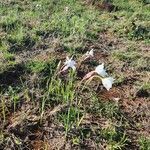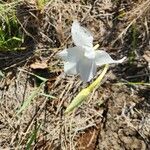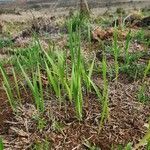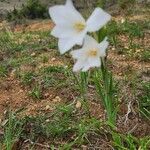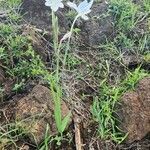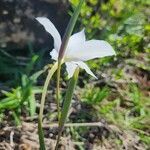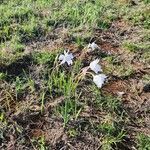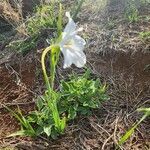Plants 20-40 cm. high.. Corm globose, 1.2-2.5 cm. in diameter, tunics firm-papery, breaking into vertical fibres above and below.. Leaves 2-3, all ± basal, narrowly lanceolate, ± 1/2 as long as the stem, 5-10 mm. wide, the margins and midribs evident but not noticeably thickened.. Stem erect, unbranched, ± 2.5 mm. in diameter below the first flower.. Spike erect, 2-4-flowered; bracts (2.5-)4-5(-8) cm. long, the inner shorter and narrower than the outer.. Flowers white, rarely pink, rarely with narrow purple median streaks in the lower midline of the lower tepals, sweetly scented; perianth-tube (7-)8-10 cm. long, ± straight and cylindric; tepals subequal, broadly lanceolate to elliptic, (2-)2.5-3 cm. long, ± 1.5 cm. wide.. Filaments ± 2 cm. long, included in the tube, or rarely exserted 1-2 mm.; anthers 8-10 mm. long, with acute apiculate appendages 1.3-1.8 mm. long.. Style dividing opposite the anther-apices, the branches 5-7 mm. long, often unusually broad and fringed.. Capsules narrowly elliptic to obovoid, 1.8-2.2 cm. long.. Fig. 17/3-4.
More
A herb. It grows 20-40 cm high. It has a round corm. This is 12-25 mm wide. There are 2-3 leaves. They are narrowly sword shaped and 5-10 mm wide at the widest. The spike has 2-4 flowers. They are white and can have a purple streak in the middle. The fruit is a capsule 18-22 mm long.
